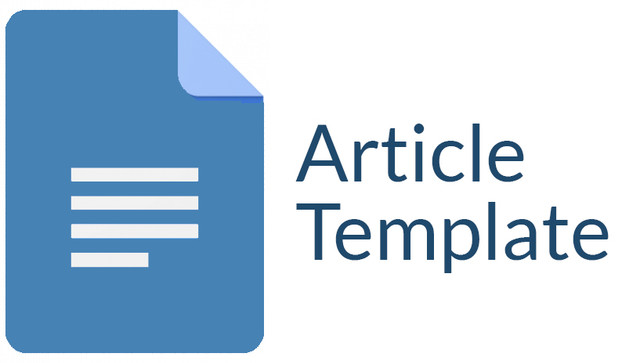Kegiatan Outbound Untuk Membentuk Kemandirian Dan Kemampuan Berinteraksi Anak Pada TK. Suratmajan
Keywords:
Outbound Activities, Forming Children's Independence, Interaction AbilityAbstract
Children begin to develop independence which is characterized by the freedom to do things their own way, namely children can run, jump, jump on their own. Lack of independence in children is caused by a lack of variety in learning activities to develop independence. Conditions like this have an impact on children's social emotional development, especially children's independence which does not develop optimally. Based on the observation sheet for children's independence and the observation sheet for the outbound game method, the outbound game method can increase children's independence and ability to interact and is declared successful. This research method uses the Classroom Action Research method with the help of data collection tools in the form of observations and children's performances. Based on the results of implementation and evaluation, it is known that there is an increase in the independence of children aged 4-5 years through the outbound game method at Suratmajan Kindergarten.
Downloads
References
Agusniatih & Monepa. (2019). Keterampilan Anak Usia Dini, Teori dan Pengembangan. Jawa Barat: Edu Publiher.
Distiara, Meva, Irvanda. (2015). Upaya Mningkatkan Kemampuan Kerjasama Melalui Kegiatan Outbound Pada Anak Kelompok B Di TK PKK 74 Serut
Serdangsari Pajangan (Skripsi). Bantul : Universitas Yogyakarta Fadillah, M. (2014). Edutaiment Pendidikan Anak Usia Dini Menciptakan Pembelajaran Menarik, Kreatif Dan Menyenangkan. Jakarta: Prenada Media Group.
Isbayani & Shinta Nur & Sulastri Made, Tirtayani Ayu Luh. (2015). Penerapan Metode Outbond Untuk meningkatkan Keterampilan Sosial Emosional Anak. E-jurnal PG Paud Universitas Pendidikan Ganesha, Volume 3
Iswinarti. (2017). Permainan Tradisional Prosedur dan Analisis Manfaat Psikologis. Malang: Universitas Muhammadiyah.
Muchlisin, Arif. (2017). Permainan Bebas dan Anak Usia Dini. Jurnal Pendidikan Anak, 2541-4658 volume 3 no.2.
Musfiroh & Tadkiroatun & Tatminingsih, Sri. (2016). Bermain dan Permainan Anak. Banten:Universitas Terbuka.
Marsini, M. (2023). The Effectiveness of the E-Library as a Learning Resource for Elementary School Students' Social Studies in Improving Literacy Skills. AL-ISHLAH: Jurnal Pendidikan, 15(3), 3726-3736.
Marsini, M. (2023). Motivasi Belajar Siswa pada Pembelajaran IPS di SDN Kraton VI Maospati. Jurnal Educatio FKIP UNMA, 9(1), 302-309.
Purwaningsih, L., Hadianti, A., & Marsini, M. (2022). PROTOTYPE DESIGN FLIPBOOK MEDIA IN TEACHING GRAMMAR “SIMPLE PAST TENSE”. Indonesian EFL Journal, 8(2), 287-294.
Noor, Rosalina Triana. (2017). Manajemen Pendidikan Anak Melalui Program Outbound Di TK Al Muslim Surabaya: Jurnal Program Studi PGRA, Volume 3 no 2, 2528-083X.
Pawistri, Trini. (2018). Penggunaan metode outbound dalam meningkatkan kemampuan sosial pada anak kelompok B (Skripsi). Surakarta : Universitas Muhammaiyah.
Pelima, Noviana. (2014). Pendidikan Lingkungan Hidup Dengan metode Outbond Untuk Anak Usia Dini:Kajian Pustaka. Jurnal Akademika, Volume 1 no.2.
Rocmah, Iffatur Luluk. (2012). Model Pembelajaran Outbound Untuk Anak Usia Dini. Jurnal Pedagogia, Volume 1 no 2, 173-188.
Samik & Rohita. (2014). Meningkatkan Kemampuan Sosial Melalui Metode Outbound Anak Usia 3-4 Tahun di PPT Umi Qolbu. Volum 3 no 3.
Setyadi, wahyu Nugroho Dwi. (2018). Pengaruh ermainan outbound terhadap perkembangan sosial anak pada kelompok B di TK Sacharia Gondang Wanangoen Klaten TA 2017/2018 (Skripsi). Surakarta: Universitas Muhammadiyah.
Trisnayanti Ayu Kd Ni, Gading Ketut I, Magta Mutiara. (2017). Pengaruh Metode Outbound Terhadap Disiplin Anak Kelompok B Pada Gugus VI Kecamatan Buleleng. Jurnal Pendidikan Anak Usia Dini, Volum 5 no 2.
Downloads
Additional Files
Published
Issue
Section
License

This work is licensed under a Creative Commons Attribution-ShareAlike 4.0 International License.
Authors who publish with this journal agree to the following terms:
1. Copyright on any article is retained by the author(s).
2. The author grants the journal, right of first publication with the work simultaneously licensed under a Creative Commons Attribution License that allows others to share the work with an acknowledgment of the work’s authorship and initial publication in this journal.
3. Authors are able to enter into separate, additional contractual arrangements for the non-exclusive distribution of the journal’s published version of the work (e.g., post it to an institutional repository or publish it in a book), with an acknowledgment of its initial publication in this journal.
4. Authors are permitted and encouraged to post their work online (e.g., in institutional repositories or on their website) prior to and during the submission process, as it can lead to productive exchanges, as well as earlier and greater citation of published work.
5. The article and any associated published material is distributed under the Creative Commons Attribution-ShareAlike 4.0 International License









